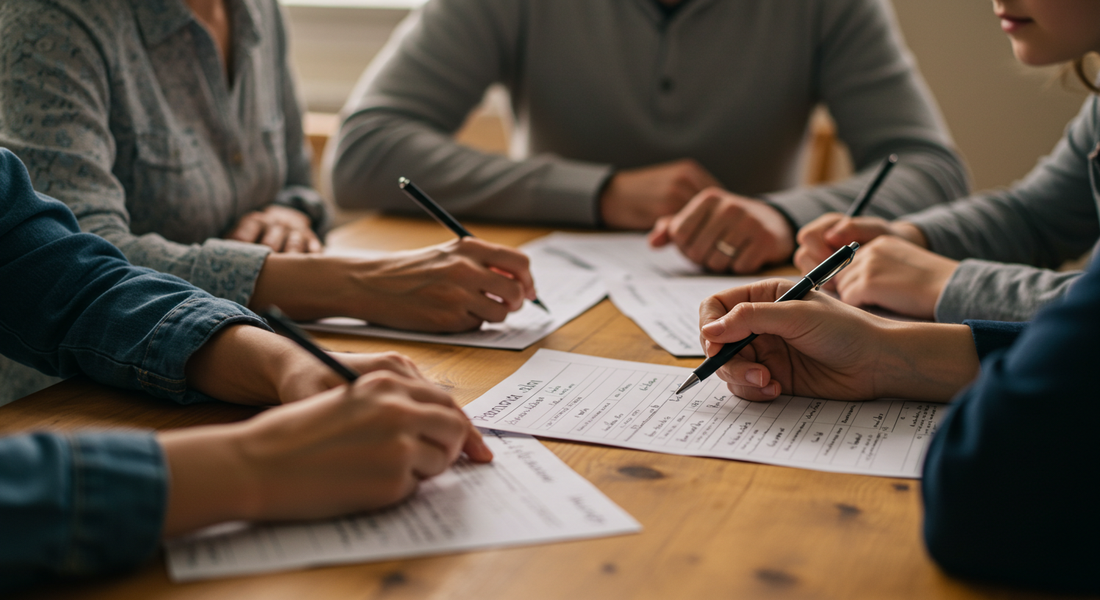
Beyond the Gear: How to Create a Simple and Effective Family Emergency Plan
Share
You've meticulously built your 72-hour kit. You have the gear, the supplies, and the tools. But what happens if disaster strikes while your family is scattered—at work, at school, at home? The most advanced survival gear is useless without a plan. A family emergency plan is the single most critical element of true preparedness. It's the software that runs your hardware, ensuring coordinated action, clear communication, and peace of mind when it matters most.
The goal of this family safety guide is to move beyond mere supplies and create a simple, actionable disaster preparedness plan that every member of your family can understand and execute.
Step 1: The Communication Plan - Your Lifeline
When local communication lines are down or overloaded, you need a pre-established way to connect.
-
Establish an Out-of-State Contact: Choose a trusted friend or relative who lives in a different state to be your family's central point of contact. In many emergencies, making a long-distance call is often easier than making a local one. After a disaster, every family member's first call should be to this person to report their status.
-
Create Wallet-Sized Contact Cards: Don't rely on phone batteries. Create a small, laminated emergency contact list for every family member to keep in their wallet, backpack, and car. This card should include:
-
The out-of-state contact's name and number.
-
Key family member phone numbers.
-
Emergency service numbers (police, fire, poison control).
-
A designated family meeting place.
-

Step 2: The Evacuation & Shelter Plan - Where to Go
Knowing where to go is just as important as knowing who to call.
-
Define Rally Points: Establish three meeting places.
-
Neighborhood Rally Point: A specific, memorable spot just outside your home for sudden emergencies like a fire (e.g., "the big oak tree across the street").
-
Regional Rally Point: A location within your town if you cannot return home (e.g., a specific library, park, or a friend's house).
-
Out-of-State Rally Point: The home of a relative or friend in another region in case of a large-scale evacuation.
-
-
Map Your Routes: Physically map out at least two different evacuation routes from your home, each family member's workplace, and your children's schools to your rally points. Don't rely on GPS.
-
"Shelter-in-Place" Protocols: Not all emergencies require evacuation. Discuss what to do during events like a severe tornado warning or a chemical spill, which may require you to stay indoors in a designated safe room.
Step 3: Practice and Drills - Building Muscle Memory
A plan on paper is just theory. Drills turn it into instinct.
-
The Importance of Practice: At least twice a year, run through your plan. Practice your fire escape route. Walk the route to your neighborhood rally point. Quiz your family on the out-of-state contact's phone number.
-
Involving Children: Frame drills as a game or a challenge, like "beat the clock" for a fire drill. This empowers them with knowledge and helps build confidence without causing undue fear.
Step 4: Assemble Your "Emergency Binder"
Consolidate all of your critical information into one grab-and-go location.
-
Physical and Digital Copies: Use a sturdy binder with plastic sleeves to hold physical copies of birth certificates, passports, social security cards, insurance policies, and deeds to your home. Also, scan these documents and save them on a password-protected, encrypted USB drive that you keep in your Go-Bag.
Conclusion: A Living Document for Peace of Mind
Your family emergency plan is not a document to be created once and forgotten. It is a living document. Review and update it annually or whenever your circumstances change (e.g., you move, change jobs, or get a new phone number). The confidence that comes from knowing your entire family is on the same page and can act decisively in a crisis is the ultimate form of preparedness.

